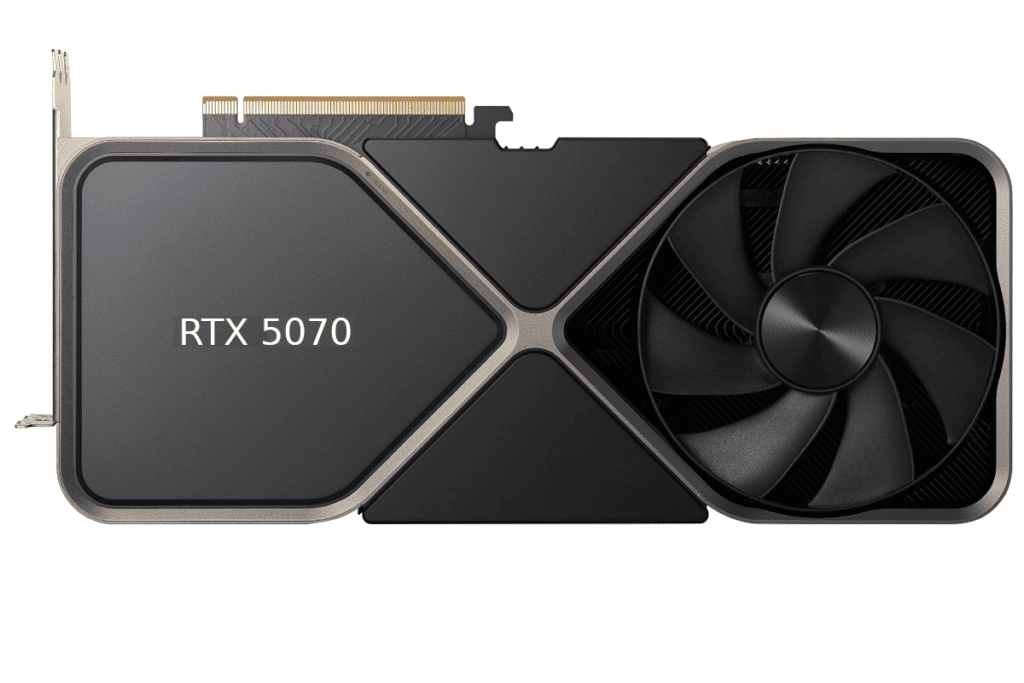Nvidia is planning to release its next generation of graphics cards, the RTX 50 series, in the first quarter of 2025. This release is highly anticipated and promises better performance and potentially groundbreaking features like GDDR7 memory. The RTX 50 series graphics cards are code-named ‘Blackwell’ and are expected to bring significant advancements in GPU technology, AI processing, and gaming power. These cards are poised to revolutionize video performance and set a new standard for 8K gaming. Industry insiders suggest features like the use of a 3nm process, substantial performance improvements over the previous RTX 40 series, and up to 36GB of GDDR7 memory in the flagship model.
The new series is also expected to bring the latest in display connectivity with support for DisplayPort 2.1, and may advance graphical fidelity and power efficiency. The first cards to launch may be the flagship 5090, followed by the 5080 shortly after. NVIDIA may focus on highlighting the efficiency of the 5000 series at CES 2025. The exact release date is still uncertain, but sources suggest a targeted release window that enthusiasts should keep an eye on.
Overall, the rumors suggest that the Nvidia 5000 Series will bring significant performance improvements, especially with the flagship 5090. However, it is important to remember that these are still rumors, and the final specifications and release dates may differ.
Anticipating the NVDIA RTX 50 Series
The Rumored Blackwell Architecture
A substantial shift from the current Ampere architecture, Blackwell is expected to bring significant improvements to performance, power efficiency, and ray tracing capabilities. Leaks suggest the flagship GB202 chip could power the RTX 5090, while GB203, GB205, GB206, and GB207 may be used for different models catering to various price points.
Specifications:
- RTX 5090:
- Significant performance boost over the RTX 4090, potentially up to 1.7 times faster
- 512-bit memory bus
- GDDR7 memory with a bandwidth of 1,536 GB/s
- DisplayPort 2.1 support
- Full utilization of PCIe 5.0
Leaked Specs and Performance Upgrades
Details regarding the specific specs of the RTX 50 series remain under wraps, but rumors suggest a potential doubling of raw performance compared to the RTX 40 series. This could mean significant advancements for gamers and content creators, enabling smoother gameplay, faster rendering, and more realistic visuals.
GDDR7 Memory: A Potential Game-Changer
One of the most exciting prospects is the potential inclusion of GDDR7 memory. This cutting-edge technology boasts double the bandwidth of GDDR6, which could lead to a significant increase in data transfer speeds, further enhancing the overall performance of the GPUs.
Projected Launch Timeline
While no official release date has been announced, industry insiders and leaks indicate a possible launch in early 2025. The initial release may focus on higher-end models like the RTX 5090 and RTX 5080, with other models following suit in the subsequent months.
Release Date Expectations:
- RTX 5090: Potential launch in the first quarter of 2025, possibly around January – February.
- RTX 5080: Expected to follow a few weeks after the 5090, also likely in Q1 2025.
- Other models: (5070, 5060, etc.): Anticipated to launch in early to mid-2025, possibly around CES 2025.
Pricing and Availability
As with any upcoming tech release, pricing is a hot topic. However, it’s safe to assume that the RTX 50 series will come with a premium price tag, especially for the top-tier models. The actual availability may depend on several factors, including production capacity and market demand.
Table: Rumored Specifications for RTX 50 Series GPUs
| GPU | Memory Interface | CUDA Cores (Estimated) | Expected Model |
|---|---|---|---|
| GB202 | 512-bit | 24,576 | RTX 5090 |
| GB203 | 384-bit | 18,432 | RTX 5080 |
| GB205 | 320-bit | 12,288 | RTX 5070 |
| GB206 | 256-bit | 8,192 | RTX 5060 |
| GB207 | 128-bit | 3,072 | RTX 5050 |
Disclaimer: These are just rumors and leaks. Actual specifications and release dates may vary.
Nvidia’s GeForce RTX 50 Series: Release Info
| Feature | Details | Source |
|---|---|---|
| Release Date | Early 2025 | Rumors, industry reports |
| Codename | Rumored to be “Blackwell” | Leaks |
| Architecture | Expected to be based on a new architecture following the RTX 40 series “Ada” Lovelace architecture | Informed speculation |
| Performance | Significant performance improvement over the RTX 40 series is anticipated, but specifics unknown | Rumors, industry expectations |
| Power Consumption | Efficiency improvements are a focus based on rumors, potentially leading to lower power draw or higher performance within the same power limits | Rumors |
| Pricing | No information is available, but the manufacturing cost changes may make the new RTX series similar or slightly higher than the RTX 40 series. | Speculation |
| Availability | Likely similar launch strategy to previous generations, with high-end models released first followed by mid-range and budget options | Informed speculation |
| Competition | Will likely compete with AMD’s RDNA 4 GPUs expected later in 2025 | Industry expectations |
Key Takeaways
- Nvidia’s RTX 50 series, codenamed Blackwell, is slated for early 2025 release.
- The GPUs may introduce advancements like a 3nm process and GDDR7 memory, promising significant performance enhancements.
- The flagship RTX 5090 is anticipated to offer up to 36GB of memory and support for DisplayPort 2.1.

NVIDIA Major GPU Release History
| Year | Series | Development Time (Years) |
| 1999 | GeForce 256 | – |
|---|---|---|
| 2000 | GeForce 2 series | 1 |
| 2001 | GeForce 3 series | 1 |
| 2002 | GeForce 4 series | 1 |
| 2003 | GeForce FX series | 1 |
| 2004 | GeForce 6 series | 1 |
| 2005 | GeForce 7 series | 1 |
| 2006 | GeForce 8 series | 1 |
| 2008 | GeForce 9 / 200 series | 2 |
| 2009 | GeForce 100 / 300 series | 1 |
| 2010 | GeForce 400 / 500 series | 1 |
| 2012 | GeForce 600 series | 2 |
| 2013 | GeForce 700 series | 1 |
| 2014 | GeForce 800M / 900 series | 1 |
| 2016 | GeForce 10 series | 2 |
| 2018 | GeForce 20 series | 2 |
| 2019 | GeForce 16 series | 1 |
| 2020 | GeForce 30 series | 1 |
| 2022 | GeForce 40 series | 2 |
| 2025* | GeForce 50 series* | 3 |
RTX 50 Series Overview
The RTX 50 series is the next leap in GPU technology from NVIDIA, promising notable improvements over its predecessors in performance and efficiency.
Evolution of NVIDIA GPUs
With each new series, NVIDIA refines its GPU architecture. The RTX 50 series evolves from the Turing and Ampere foundations, building on the lessons learned and performance benchmarks set by the RTX 30 and RTX 40 series. The Blackwell architecture of the RTX 50 series marks another progressive step, expected to provide significant performance uplift.
Specifications and Performance
The RTX 50 series GPUs are anticipated to incorporate cutting-edge technology like GDDR7 memory, which provides faster speeds and greater bandwidth than previous generations. Users can expect these GPUs to carry substantial enhancements in specs that translate into smoother, more immersive gaming experiences and swifter professional workloads.

Comparison with Previous Generations
When compared to the RTX 30 and RTX 40 series, the RTX 50 GPUs aim to offer a higher level of performance. Each generation typically sees improvements in core counts, clock speeds, and energy efficiency. Performance uplift with each series means users can run more demanding applications with greater ease. The RTX 50’s new architecture, potentially named after the mathematician Ada Lovelace, is designed to succeed the Ada Lovelace and Ampere architectures, providing users with a glimpse into the future of gaming and professional graphics processing.
RTX 50 Lineup Expectations
For the first generation it is expected that these cards will be released:
- GeForce RTX 5060 | Expected Release Mid to Late 2025
- GeForce RTX 5060 Ti | Expected Release Mid to Late 2025
- GeForce RTX 5070 | Expected Release Early 2025
- GeForce RTX 5070 Ti | Expected Release Mid to Late 2025
- GeForce RTX 5080 | Expected Release Early 2025
- GeForce RTX 5090 | Expected Release Early 2025
Technology and Innovation
The upcoming Nvidia RTX 50 series is expected to redefine high-performance gaming and professional graphics with its advanced AI and ray tracing capabilities, combined with cutting-edge manufacturing processes and memory technologies.
AI and Ray Tracing Advancements
The RTX 50 series will further harness the power of AI, improving gaming and creative workflows alike. With enhanced Tensor Cores, these GPUs will elevate AI-driven applications to new levels. Ray tracing, a method that simulates how light interacts with objects to produce lifelike images, will see significant advancements. Expect these GPUs to process this complex task quicker than ever, allowing for more realistic and immersive environments in games and simulations.
Manufacturing Process and Memory Technology
Nvidia’s collaboration with TSMC is set to bring forth the RTX 50 series GPUs built on a refined 3nm process node. This move reflects a leap forward in transistor density, potentially offering higher speeds and greater energy efficiency. Alongside this, memory technology will advance with the pending introduction of GDDR7, promising a notable increase in memory bandwidth over GDDR6. This could be paired with a 384-bit memory bus, ensuring the smooth handling of high-resolution textures and assets. Such improvements in memory would also benefit applications beyond gaming, such as data-intensive AI processes and large-scale 3D rendering.
Frequently Asked Questions
With the anticipation building around the Nvidia RTX 50-series, potential buyers and tech enthusiasts have several questions about the release and features of Nvidia’s next-generation graphics cards.
When can we expect the launch of the next-generation RTX series?
The launch of the Nvidia RTX 50-series, known by its codename “Blackwell”, is expected to occur in the first quarter of 2025. Given Nvidia’s historical launch patterns, this projected timeline aligns with the company’s typical two-year cadence between new graphics card generations.
What price range might we see for the upcoming RTX series graphics cards?
While exact pricing has not been officially announced, based on the trends and past model launches, the starting price for the entry-level cards in the RTX 50-series could be expected to be around the $700 mark. However, prices for higher-end models like the RTX 5090 would likely be significantly higher.
What improvements will the upcoming RTX series offer over the previous generation?
The RTX 50-series is expected to bring advancements in performance, efficiency, and capabilities. This includes more efficient use of power and possibly better support for emerging tech like ray tracing. The specifics will be clarified as the release date approaches.
Are there any confirmed specifications for the next-gen RTX graphics cards?
It is rumored that the top-tier RTX 5090 may use GDDR7 VRAM with memory chips that run at 28 Gbps. However, Nvidia has not confirmed the specifications for the RTX 50-series yet.
How will the performance of the new RTX series compare to the RTX 4090?
The new RTX 50-series is expected to offer enhanced performance compared to the RTX 4090. Exact performance metrics will become clear only after the release, but improvements in core count, memory, and overall efficiencies should lead to noticeable gains.
What is the anticipated availability of the new RTX series after the initial release?
Historically, new Nvidia GPU releases see high demand, which can lead to limited availability initially. It is expected that the RTX 50-series will follow this pattern, with stock normalizing as production ramps up post-launch.







